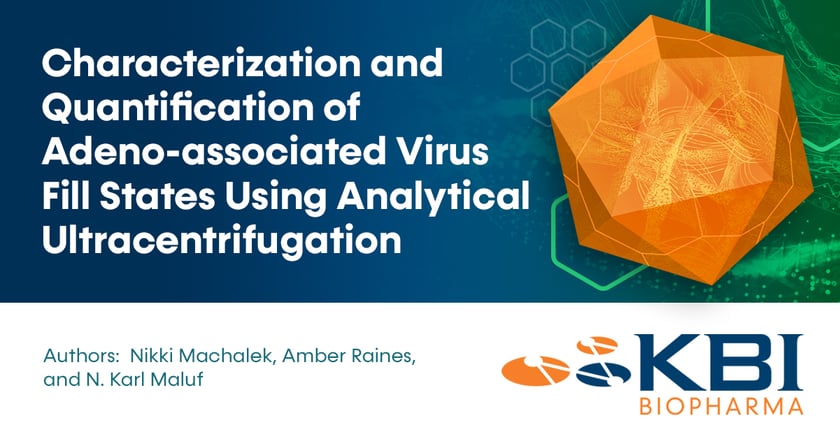Poster Presentation
Nikki Machalek, Amber Raines, and N. Karl Maluf
The KBI Biopharma Team from our Louisville, CO location recently published the results of their research in the scientific poster Characterization and Quantification of Adeno-associated Virus Fill States Using Analytical Ultracentrifugation.

Recombinant adeno-associated viruses (AAV) are used extensively as a vector for gene therapy. AAV products are composed of a proteinaceous capsid that encapsulates the single stranded DNA genome. Preparations of purified AAVs typically contain species ranging from empty capsids, various partially-packaged capsids that contain less than the full complement of intended DNA, fully-packaged capsids which represent the drug product, along with viral/capsid aggregates and fragments. Characterization and quantification of these species is necessary to ensure safety and efficacy of gene therapy treatments.
In this poster, we discuss implementation of these methods in our lab to provide a more comprehensive description of AAV size distributions for our clients. We show how this analysis can be used to identify empty, partially-packaged and full capsids, calculate the ratio of protein to DNA present in well resolved species, and compare the multi-wavelength results with expected values that arise from a consideration of the shape properties of AAVs. Furthermore, we show how this approach can help eliminate false peak identification. We also conducted a statistical analysis of the measurement precision and have established acceptance criteria (for this commercially available AAV-5 model system) for fundamental measures such as main peak sedimentation coefficient, peak percentages and capsid fill state.
Download the Poster (PDF):

 KBI Biopharma
KBI Biopharma
